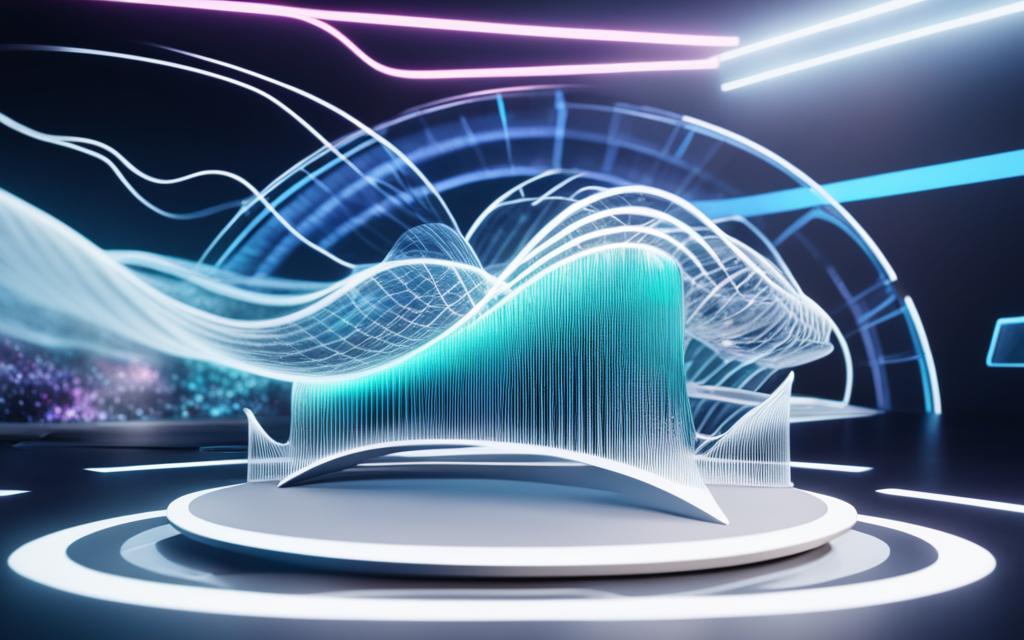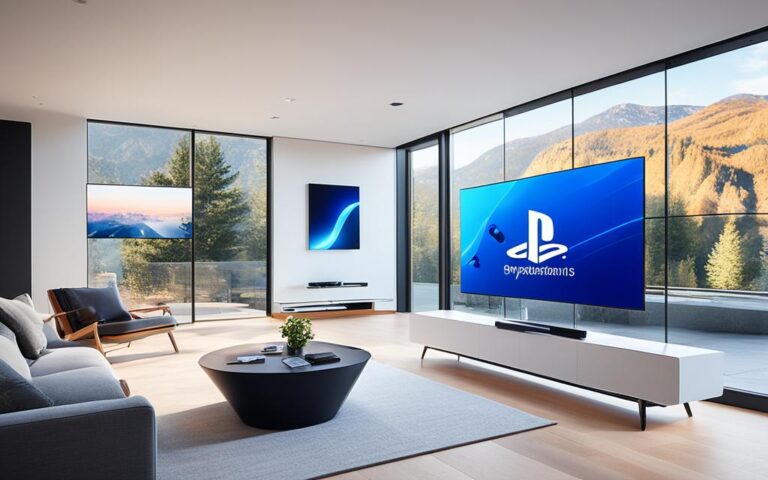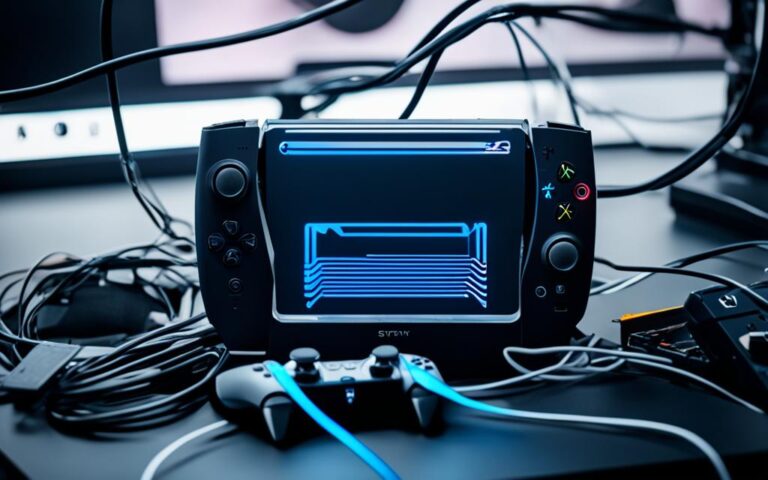Overcoming Audio Output Challenges on the PlayStation 5
The PlayStation 5 (PS5) is the latest generation of gaming consoles that promises enhanced graphics and faster loading times. However, it also comes with its audio output challenges. These challenges include the complexity of replicating true 3D audio, the limitations of existing surround sound systems, and the need for audio output solutions that cater to different user preferences and environments.
The Complexity of 3D Audio Replication
Achieving true 3D audio replication on consumer electronic devices is a complex task. Sound localization, the ability to identify the direction of a sound, relies on subtle cues such as volume, timing, and pitch. Replicating these cues accurately requires the use of a head-related transfer function (HRTF) to trick the brain into perceiving the sound as coming from a specific location in 3D space. However, determining the exact HRTF required for each listener is challenging, as it depends on the individual’s head shape and size.
This complexity has led to a focus on implementing 3D audio in headphones, where the audio can be split into the left and right ears without the issue of crosstalk.
Limitations of Surround Sound Systems
Traditional surround sound systems, such as 5.1 and 7.1 configurations, do not provide a truly immersive 3D soundscape. These systems consist of multiple speakers placed in pre-determined positions, limiting the ability to create a realistic 3D audio experience. The interaction of sounds coming from different directions with the human body further complicates the reproduction of a 3D soundscape. As a result, alternative audio output solutions are needed to overcome the limitations of surround sound systems.
“Surround sound systems have long been the go-to choice for creating a captivating audio experience. However, they fall short when it comes to delivering a truly immersive 3D soundscape. Their static speaker placement and the complexities of sound interaction with the listener’s body make it challenging to replicate a natural audio environment.”
To better understand the limitations of surround sound systems, let’s take a closer look at their key drawbacks:
1. Static Speaker Placement
Surround sound systems rely on a fixed arrangement of speakers to reproduce audio from various directions. For example, a 5.1 system consists of five speakers (front left, front center, front right, rear left, and rear right) and a subwoofer. A 7.1 system adds two additional speakers (side left and side right). While these setups can create a sense of directionality, they lack the dynamic flexibility required for a truly immersive 3D audio experience.
2. Complex Sound Interaction
Sound waves interact with the human body in complex ways, affecting the perception of direction and spatiality. The reflection, absorption, and diffraction of sound as it travels can alter its perceived source location. Surround sound systems struggle to accurately reproduce these intricate interactions and often result in a compromised 3D soundscape.
3. Limited Sound Localization
Accurate sound localization, the ability to pinpoint the source of a sound, is crucial for creating a convincing 3D audio experience. Traditional surround sound systems rely on time delays and volume adjustments to simulate sound coming from different directions. However, this approach fails to capture the subtleties of sound localization, leading to an artificial and incomplete audio representation.
To address these limitations, alternative audio output solutions are emerging, providing a more immersive and realistic 3D soundscape. These solutions leverage innovative technologies and adaptive algorithms to deliver a captivating audio experience beyond the boundaries of traditional surround sound systems.
| Surround Sound Systems | Alternative Audio Output Solutions |
|---|---|
| Static speaker placement | Dynamic speaker positioning based on the listener’s position |
| Complex sound interaction | Advanced algorithms to replicate natural sound interactions |
| Limited sound localization | Precise sound localization for an immersive 3D audio experience |
These alternative solutions aim to provide a more accurate and captivating audio experience, bringing the 3D soundscape to life. By addressing the limitations of surround sound systems, these advancements ensure that users can enjoy a truly immersive audio experience that enhances the overall enjoyment of music, movies, and gaming.
Introducing Audioscenic’s Virtua Technology
Audioscenic, a technology company, has developed Virtua – a groundbreaking software solution that overcomes the limitations of existing 3D audio-enabled loudspeakers. With Virtua, Audioscenic revolutionizes the audio output landscape, providing a truly immersive 3D audio experience for users.
Virtua utilizes advanced head-tracking technology to monitor the listener’s position and precisely deliver separate sound waves to the left and right ears. By doing so, it creates a natural and realistic 3D audio environment that enhances the overall audio output quality.
Unlike traditional solutions that have a limited sweet spot, Audioscenic’s Virtua offers unparalleled flexibility and adaptability. It can be seamlessly integrated into various applications, including gaming, TV soundbars, laptops, and smart speakers, ensuring a consistently exceptional audio experience in any setting.
The upcoming release of Audioscenic’s Virtua technology is eagerly anticipated by audio enthusiasts and gaming communities alike. With its unparalleled ability to deliver an immersive and lifelike audio experience, Virtua is set to make waves in the market.
Table: Features of Audioscenic’s Virtua Technology
| Key Features | Benefits |
|---|---|
| Head-tracking technology | Delivers precise sound localization for a natural 3D audio experience |
| Separate sound waves to left and right ears | Creates an immersive audio environment |
| Flexibility and adaptability | Compatible with gaming, TV soundbars, laptops, and smart speakers |
With its innovative technology, Audioscenic’s Virtua is set to redefine audio output solutions and provide users with an unparalleled audio experience. Be prepared to immerse yourself in a whole new dimension of sound.
The Growing Importance of 3D Audio in Gaming
The release of the PlayStation 5 and Xbox Series X has highlighted the growing importance of 3D audio in gaming. Both consoles come equipped with dedicated 3D audio chipsets, aiming to provide a more immersive gaming experience. As the adoption of 3D audio technology increases, streaming services and game developers are adding more 3D audio content to their platforms. The demand for compatible hardware to fully experience 3D audio is becoming a limiting factor.
With the advancement of technology, gamers now seek more than just impressive graphics and responsive controls. They crave a truly immersive gaming experience that engages all their senses. This is where 3D audio comes into play, transforming sound into an integral part of the gameplay and elevating the overall gaming experience to new heights.
3D audio technology creates a sense of depth and realism by simulating sound in three-dimensional space. It allows players to perceive sounds coming from different directions, enhancing their spatial awareness and immersing them in the virtual world. Whether it’s the sound of footsteps creeping up from behind, the distant roar of an approaching vehicle, or the echo of a bullet ricocheting off a wall, 3D audio adds a new layer of realism and excitement to gaming.
Gone are the days of relying solely on visual cues to navigate through games. With 3D audio, players can use sound to their advantage, strategically locating enemies or identifying hidden pathways. This new level of audio immersion opens up a whole new realm of possibilities for game developers, enabling them to create more immersive and interactive gameplay experiences.
“3D audio technology creates a sense of depth and realism by simulating sound in three-dimensional space.”
The PlayStation 5 and Xbox Series X have recognized the importance of 3D audio in delivering a truly captivating gaming experience. Both consoles incorporate dedicated 3D audio processing units, paving the way for game developers to explore the full potential of this technology. With the power of custom hardware, these consoles can accurately position sounds in 3D space, creating a rich and immersive audio environment that enhances the overall gaming experience.
Additionally, streaming services such as Spotify and Tidal have started offering music in 3D audio formats, expanding the reach of this technology beyond gaming. By integrating 3D audio into their platforms, these services aim to provide a more immersive and lifelike music listening experience, further driving the demand for compatible hardware.
In order to fully experience the benefits of 3D audio, gamers need compatible hardware that can deliver the spatial accuracy and precision required for an immersive audio experience. This includes headphones and speakers that can accurately reproduce the 3D audio effects created by game developers.
| Compatible Hardware for 3D Audio | Pros | Cons |
|---|---|---|
| 1. Headphones | – Provide accurate sound localization – Enhance spatial awareness |
– Can be uncomfortable for extended gaming sessions – Limits awareness of the surrounding environment |
| 2. Dedicated Gaming Speakers | – Simulate immersive soundscapes – Create a more engaging gaming experience |
– Requires careful speaker placement for optimal effect – Some models may be expensive |
| 3. Soundbars with Virtual Surround Sound | – Provide a wider soundstage – Produce simulated 3D audio effects |
– May not offer the same level of accuracy as headphones – Limited customization options |
The demand for compatible hardware capable of delivering a truly immersive 3D audio experience is growing as more games and content incorporate this technology. Players are seeking to elevate their gaming experiences to new heights, and 3D audio is becoming an essential ingredient in achieving that goal.
As the gaming industry continues to embrace the power of 3D audio, we can expect more innovation and advancements in this field. Game developers are increasingly leveraging the capabilities of 3D audio to create more immersive and realistic gameplay experiences. With the PlayStation 5 and Xbox Series X leading the way, the future of gaming audio looks incredibly promising.
The Unique Features of Returnal on PS5
Returnal is an eagerly awaited game developed by Housemarque, renowned for its groundbreaking arcade-style gameplay. This game pushes the boundaries in terms of design, technology, and gameplay on the PlayStation 5. Returnal utilizes the impressive features of the PS5, including near-instant loading, adaptive triggers, haptic feedback, and advanced 3D audio, to deliver an incredibly immersive experience.
The gameplay of Returnal revolves around dynamic environments, offering players seamless exploration and traversal mechanics. The game also boasts a compelling sci-fi narrative, captivating players with its deep storyline. With unique gameplay mechanics, Returnal offers a refreshing twist on traditional gaming experiences.
One of the standout aspects of Returnal is its stunning visuals, which are made possible by ray tracing technology. This cutting-edge rendering technique creates lifelike lighting, reflections, and shadows, elevating the in-game visuals to new heights.
To give you a taste of the breathtaking visuals of Returnal, take a look at the image below:
Whether you’re exploring the haunting landscapes or engaging in intense combat, Returnal’s visuals will immerse you in its otherworldly world.
Conclusion
In conclusion, addressing the audio output challenges on the PlayStation 5 (PS5) is crucial to enhancing the gaming experience. The complexity of replicating true 3D audio, the limitations of surround sound systems, and the need for innovative audio output solutions all contribute to the need for a comprehensive approach.
Audioscenic’s Virtua technology offers a promising solution by delivering a natural 3D audio experience without the need for headphones. This innovative software solution uses head-tracking technology to create an immersive audio environment, allowing gamers to fully engage with their games and experience a realistic soundscape.
As the demand for 3D audio in gaming continues to grow, it is essential to address these challenges to provide gamers with an immersive and high-quality audio experience on the PS5. By leveraging Audioscenic’s Virtua technology and other advancements in audio output solutions, game developers and hardware manufacturers can create a more captivating and immersive gaming experience for players.
By overcoming these audio output challenges and providing innovative solutions, the PS5 gaming experience can be taken to new heights, allowing gamers to truly immerse themselves in the incredible worlds and stories that are brought to life through stunning visuals and realistic audio.












